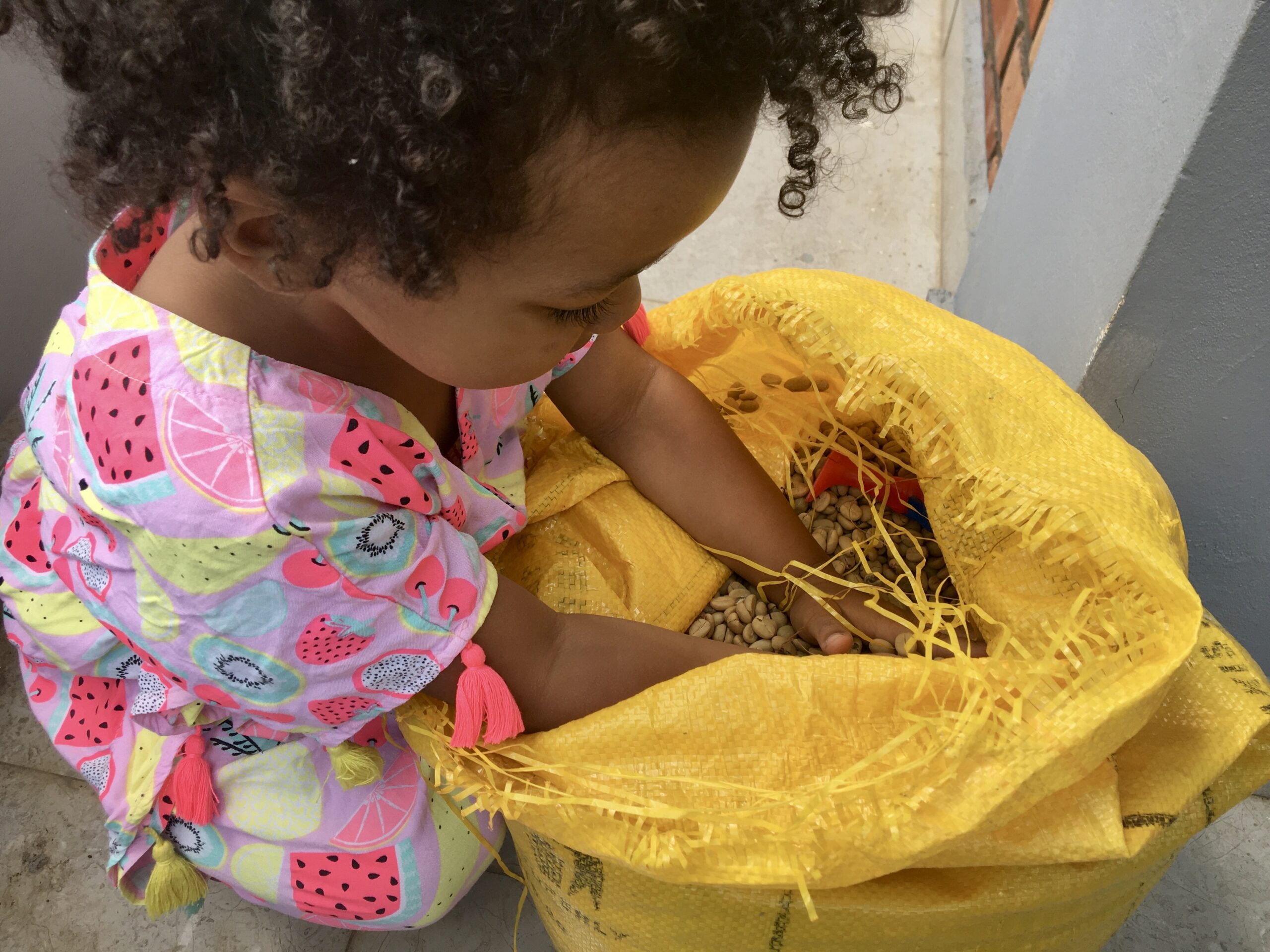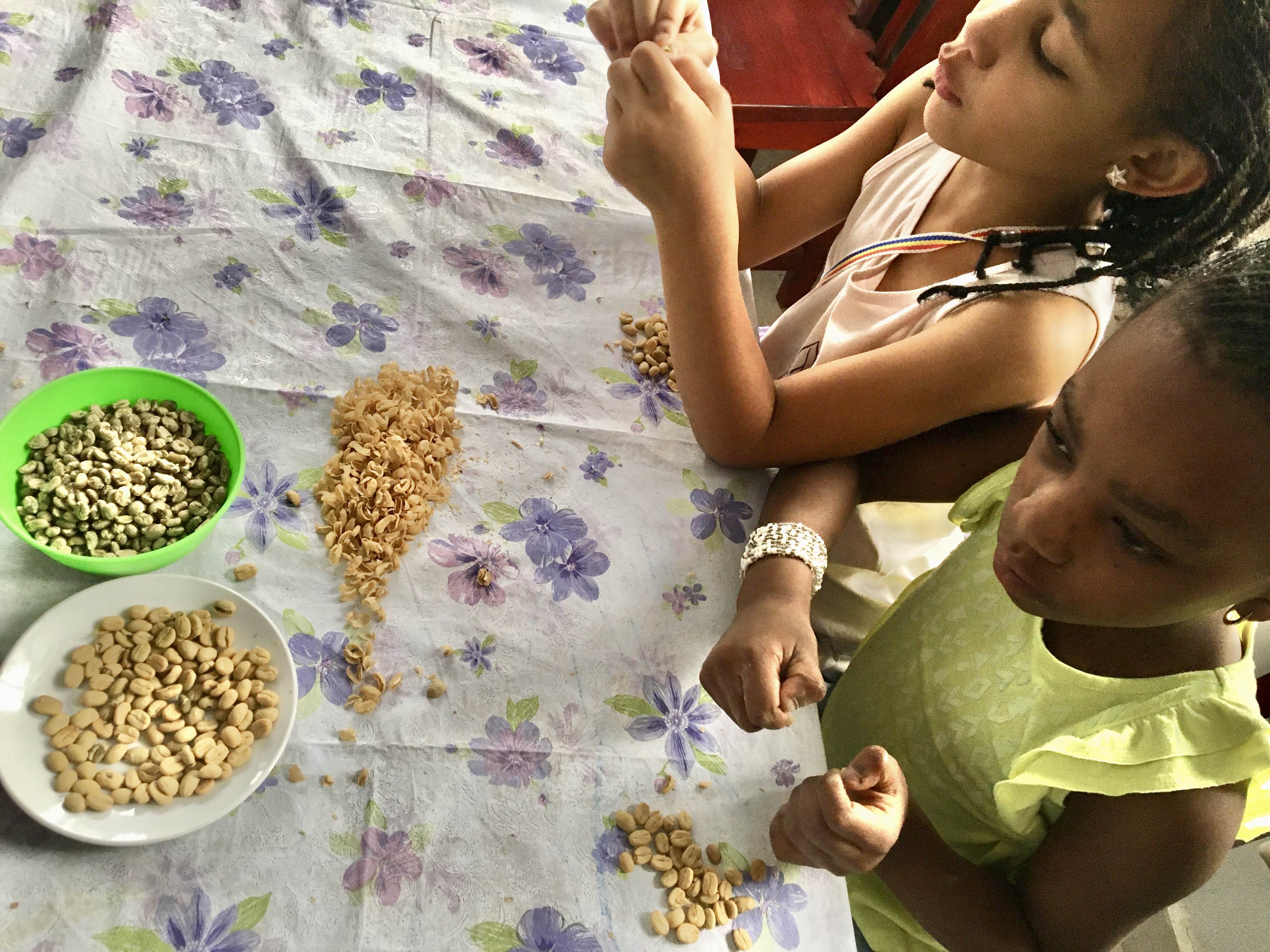The first time someone brought fresh coffee to us at home here in Bukavu from the field, it was green coffee with the endocarp or skin on, called parchment. Though Ali had seen this as a kid at his grandparent’s house, for Lucy was the first time she had ever seen coffee prior to roasting. Our kids get excited to check out a bag of parchment coffee; they love the feel of the beans and practice their counting with them.

But parchment? What is that and what is its role?
We learned a bit about the anatomy of a coffee bean.
Coffee grows on small trees that produce cherries. The cherries, when ripe, turn from green to red. Inside the cherry is the coffee bean. If you eat or remove the cherry (yes you can eat it!), you find (usually) two coffee beans, each of which has a protective layer around it called parchment, which feels like a moist, slippery, fibrinous membrane. When the coffee has been washed and dried, it cracks off like an outer peel from the coffee bean.
We thought it was cool, until we realized how time consuming it was to peel it off by hand, bean by bean. Even though our kids, nieces, nephews, and friends love to peel the parchment off with us, we still weren’t peeling enough each day to keep up with our family’s consumption.

Parchment coffee for mass production is fed through a large hulling machine in a mill that takes the parchment off and spits out green coffee, which are raw beans without the parchment and what gets roasted.
But large-scale hulling machines are out of our budget and hard to get here, so we hull the fresh coffee beans in a more traditional way, by hand using what is like a large mortar and pestle. To do this the beans have to be really dry, or else the parchment doesn’t come off easily. Which is fitting since the word parch comes in part from the word to dry in Latin.
But the work is worth it!
Because coffee stays freshest in its parchment.
We like to drink our coffee as fresh as possible. The ideal time to peel the parchment off is 2-6 months after harvest and washing, though some expert recommendations vary. Once the parchment is off it’s best to roast it sooner than later. When we drink coffee in the US, the coffee has been out of its parchment for quite some time because it is shipped from its origin after the parchment is off. So, to get to our cup in the US, coffee is hulled near where it’s grown, then polished, sorted, packed, and shipped, which all takes time. It may be several months between removing the parchment and roasting the coffee we buy in the US. When this much time lags, the coffee loses freshness.
When we are here in DRC, we don’t have much choice but to buy our coffee in parchment.
Which works great for us. Because this means we drink our coffee as fresh as can be. We remove the parchment in batches when we’re ready to roast it. It’s a lot of work, and it’s a privilege to get to do it and drink coffee this good and this fresh.